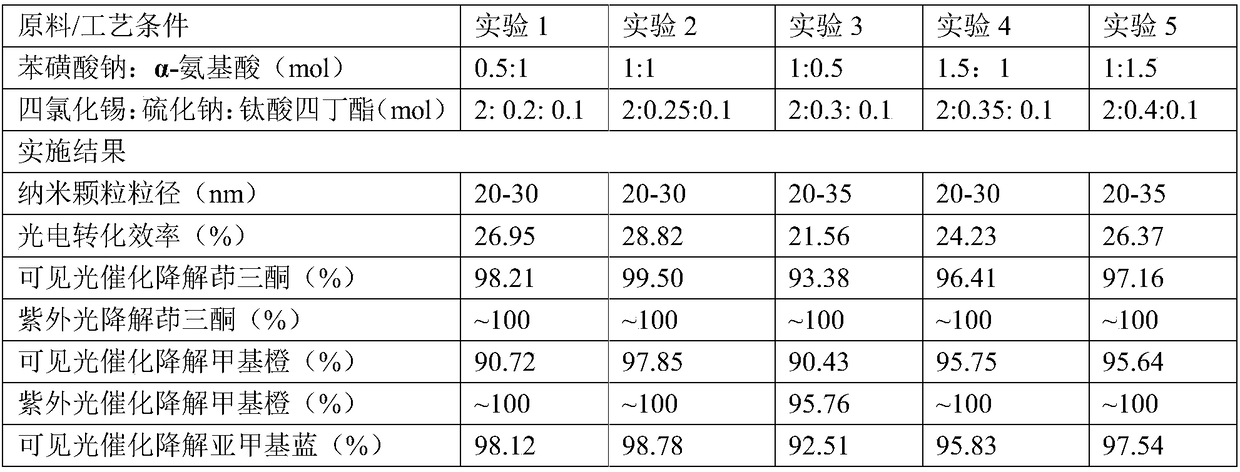Preparation method and application of tin oxide-based solar battery nanometer
A technology for solar cells and nanomaterials, which is applied in the field of preparation of tin oxide-based solar cell nanomaterials, can solve the problems of low photoelectric conversion efficiency, achieve low cost, meet processing requirements, and be easy to form into tablets
- Summary
- Abstract
- Description
- Claims
- Application Information
AI Technical Summary
Problems solved by technology
Method used
Image
Examples
Embodiment example
[0022]
[0023]
[0024] The bandgap widths of the three compounds in the tin oxide-based solar cell nanomaterials of the present invention are respectively 3.5, 2.1, and 0.7eV, which are in an arithmetic progression, and the tolerance d=△E g =1.4eV, its energy gap width △E g =1.55~1.85eV. The electric fields of different potentials constructed inside the crystal material are conducive to the accelerated separation of carriers excited by different wavelengths of sunlight, reducing the recombination and annihilation of carriers with different energies, and improving the photoelectric conversion efficiency. The particle size of the composite nanopowder material is closely related to the tunneling effect of the nanoparticles, and the crystallite size is positively correlated with the photoelectric conversion efficiency. The interface polarization field generated by the defect concentration in the crystal is conducive to the transfer of charges, which is conducive to the sepa...
PUM
| Property | Measurement | Unit |
|---|---|---|
| size | aaaaa | aaaaa |
| particle size | aaaaa | aaaaa |
Abstract
Description
Claims
Application Information
 Login to View More
Login to View More - R&D
- Intellectual Property
- Life Sciences
- Materials
- Tech Scout
- Unparalleled Data Quality
- Higher Quality Content
- 60% Fewer Hallucinations
Browse by: Latest US Patents, China's latest patents, Technical Efficacy Thesaurus, Application Domain, Technology Topic, Popular Technical Reports.
© 2025 PatSnap. All rights reserved.Legal|Privacy policy|Modern Slavery Act Transparency Statement|Sitemap|About US| Contact US: help@patsnap.com


